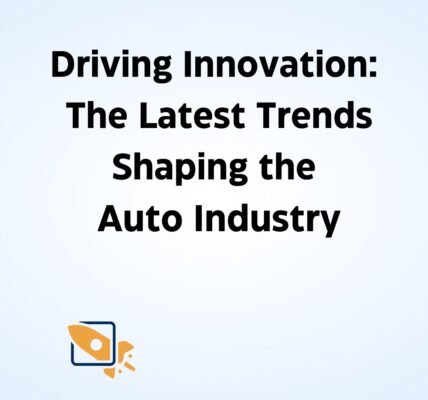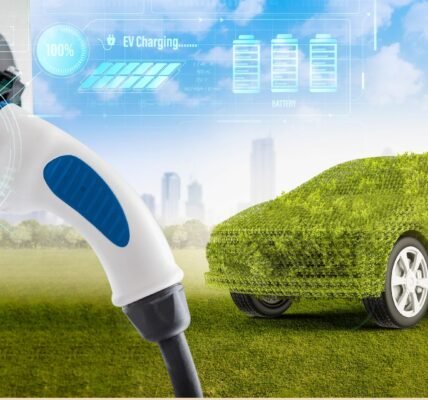The world of automobiles is changing fast. With each new model, smart cars and autonomous driving are becoming more advanced and accessible. These vehicles are not just about getting from point A to point B. They are reshaping how we think about transportation altogether.
The shift to smart cars and autonomous driving means cars can now drive themselves, avoid accidents, and communicate with other vehicles. The technology behind this change is impressive and is already starting to make its mark on the auto industry.
What are Smart Cars?
Smart cars are vehicles equipped with advanced technology that improves safety, efficiency, and convenience. They are different from traditional cars because they are always connected. Smart cars and autonomous driving work together, relying on sensors, cameras, and artificial intelligence (AI) to make decisions in real-time.
For instance, modern smart cars can detect nearby obstacles, adjust speed, and even park themselves. The intelligence of these systems is the foundation of autonomous driving. In 2024, we expect even more features to be added to smart cars and autonomous driving systems, making them smarter and more intuitive.
The Rise of Autonomous Driving
Autonomous driving refers to cars that can operate without human input. Today, we have semi-autonomous cars that can take control of specific tasks like lane-keeping and adaptive cruise control. However, fully autonomous cars are the ultimate goal.
The development of smart cars and driving technology has paved the way for these self-driving cars. Companies like Tesla, Waymo, and General Motors are already testing autonomous vehicles that can navigate traffic, avoid collisions, and even follow traffic rules.
In 2024, we expect more companies to release new models that push smart cars and autonomous driving closer to full automation. This shift will dramatically change how we drive and interact with vehicles.
How Do Autonomous Cars Work?
Autonomous cars rely on a combination of sensors, cameras, radar, and AI to navigate. These cars constantly monitor their surroundings, collecting data in real time. AI then processes this data and makes decisions based on the environment. The smart cars and Self-driving cars systems can control everything from acceleration to braking and steering.
The key to successful autonomous driving lies in these systems working together seamlessly. For example, a smart car can detect a pedestrian crossing the street and immediately slow down. It can also navigate around obstacles, like construction zones or parked cars.
Benefits of Smart Cars and Autonomous Driving
One of the biggest advantages of smart cars and Self-driving cars is increased safety. Human error is responsible for most accidents on the road. Autonomous driving aims to reduce accidents by removing the human element from driving.
Smart cars equipped with AI can process information faster than any human. They can react to danger instantly and avoid potentially deadly situations. This will save lives and make the roads safer for everyone.
Another benefit of smart cars and autonomous driving is convenience. Autonomous cars can handle the mundane tasks of driving, like staying in a lane or adjusting speed in traffic. This will free up time for drivers to focus on other things while on the road.
Additionally, smart cars and Self-driving cars systems are designed to be more efficient. They can optimize routes and reduce fuel consumption. As a result, they are not only safer but also better for the environment.
Challenges Ahead
Despite the promising benefits, there are still several challenges for smart cars and Self-driving. One major concern is legal regulation. Governments will need to create new laws to address issues like liability and safety standards for autonomous cars.
Another challenge is public trust. Many people are still uncomfortable with the idea of a car driving itself. Convincing consumers to embrace smart cars and Self-driving cars technology will require significant effort from automakers.
Technical limitations also present a challenge. While AI has made significant advancements, it is not perfect. Self-driving cars may struggle with unpredictable situations like bad weather or poor road conditions. Until these issues are fully addressed, smart cars and autonomous driving will not be ready for widespread use.
The Role of AI in Autonomous Driving
Artificial intelligence plays a central role in the development of smart cars and autonomous driving. AI allows vehicles to “think” for themselves and make real-time decisions. The ability to analyze data from cameras and sensors enables autonomous cars to drive safely and efficiently.
In recent years, AI technology has advanced rapidly. Machine learning algorithms allow self-driving cars to improve their performance by learning from experience. This means that the more autonomous cars are on the road, the better they will become at navigating complex environments.
Companies like Tesla are already using AI-powered smart cars and autonomous driving features, such as Autopilot. This system allows cars to drive themselves in certain conditions, like highways or parking lots. As AI continues to evolve, autonomous cars will only become more capable.
Smart Infrastructure and Connected Vehicles
The future of smart cars and autonomous driving goes beyond the vehicles themselves. Smart infrastructure, such as connected roads and traffic lights, will play a crucial role in making autonomous driving possible.
Cities around the world are investing in intelligent infrastructure that can communicate with cars. For example, traffic lights will be able to send signals to smart cars, telling them when to stop or go. This communication will improve traffic flow and reduce congestion.
Connected vehicles will also be able to communicate with each other. They can share information about road conditions, accidents, or nearby hazards. This network of connected cars and infrastructure will make autonomous driving safer and more efficient.
The Future of Transportation
As we look ahead to 2024 and beyond, smart cars and autonomous driving are set to redefine transportation. In the near future, self-driving cars may become a common sight on the road. These vehicles will offer a safer, more efficient way to travel.
However, the transition to autonomous driving will take time. Automakers, governments, and consumers will need to work together to overcome the challenges and unlock the full potential of smart cars and autonomous driving.
The technology is already here, and its development is accelerating. While fully autonomous cars may still be a few years away, the road to the future is clear. Smart cars and autonomous driving are the next big step in the evolution of transportation.
Conclusion
Smart cars and autonomous driving are changing the way we move. With advanced AI, connected infrastructure, and cutting-edge technology, the future of transportation looks promising. Although there are challenges ahead, the benefits of smart cars and autonomous driving are undeniable. Safer roads, more efficient travel, and a world where driving is optional are all part of the exciting future we can look forward to.





